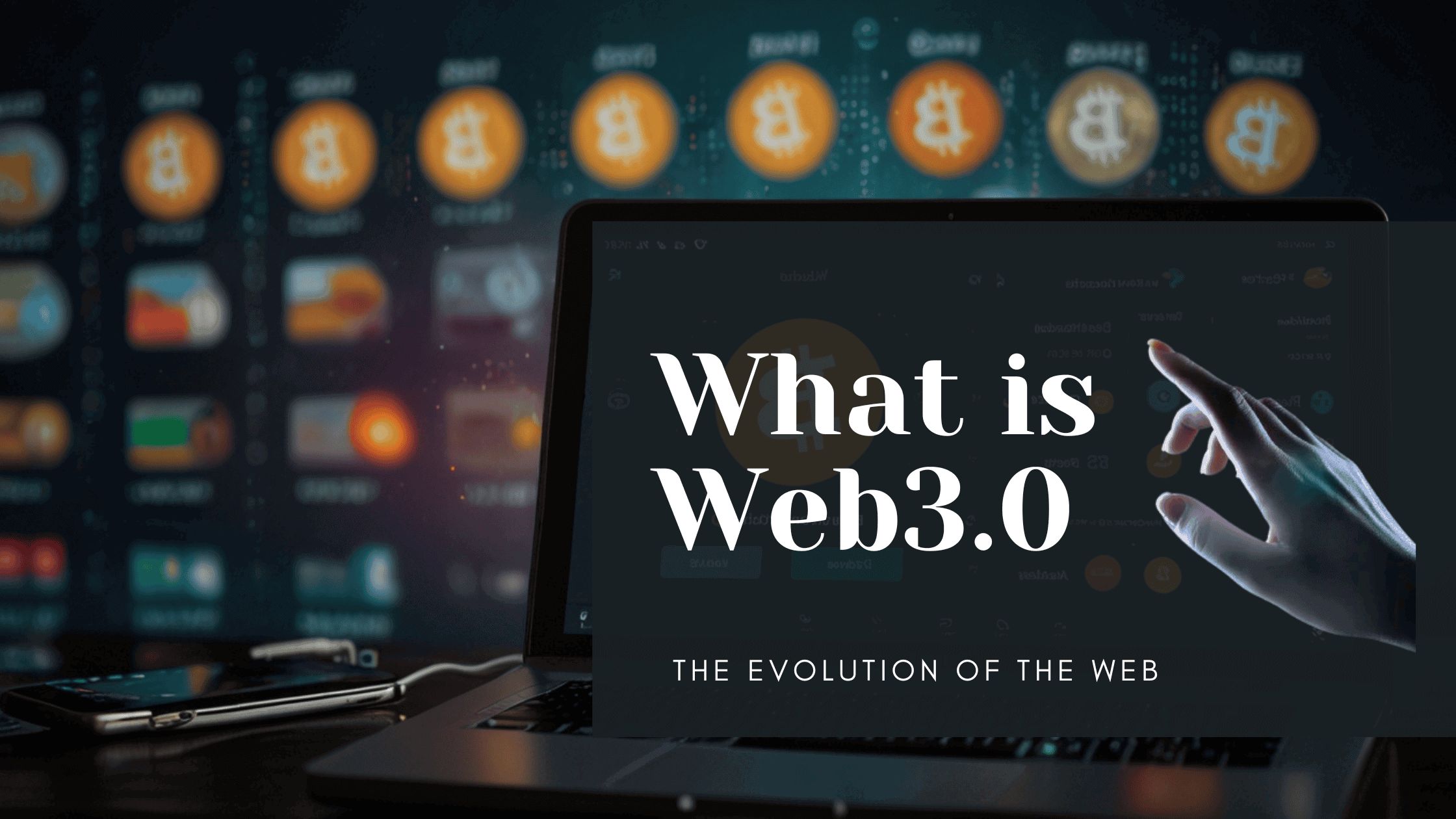Table of Contents
I. The Rise of Artificial Intelligence (AI)
- Transforming Industries: AI’s Role in Automation
- Generative AI: Redefining Creativity and Content Production
- Ethical Considerations in AI Development
- AI in Everyday Life: Smart Homes, Virtual Assistants, and More
II. The Evolution of Blockchain Technology
- Beyond Cryptocurrencies: New Use Cases for Blockchain
- Decentralized Finance (DeFi): Revolutionizing Banking
- NFTs and the Future of Digital Ownership
- Blockchain’s Role in Cybersecurity and Data Integrity
III. The Future of Connectivity: 5G and Beyond
- Enhanced Mobile Experiences: What 5G Brings to the Table
- Internet of Things (IoT): Connecting the World Seamlessly
- Potential Challenges: Infrastructure and Privacy Concerns
IV. Immersive Technologies Shaping Experiences
- Virtual Reality (VR) in Gaming and Training
- Augmented Reality (AR) in Retail and Education
- Mixed Reality (MR): Bridging the Virtual and Physical Worlds
V. Green Tech: Innovations for a Sustainable Future
- Renewable Energy Advancements: Solar, Wind, and Beyond
- Electric Vehicles (EVs): Breaking Barriers in Adoption
- Smart Cities: Tech Solutions for Urban Sustainability
VI. Security and Privacy in the Digital Age
- Cyber Threats on the Rise: Emerging Challenges
- Privacy Laws and Their Impact on Tech Companies
- Personal Data Protection: Tools and Best Practices
Are you curious about the newest tech shaping our world today? Technology has become the heartbeat of modern innovation, driving changes that impact how we work, live, and connect. From breakthroughs in artificial intelligence to revolutionary tools in connectivity and sustainability, staying ahead of the curve is no longer optional—it’s essential.
But with so many emerging technologies making headlines, how can you identify the ones that truly matter? That’s where this guide comes in. We’ll take you on a journey through the trending tech transforming industries and improving everyday life, all while exploring the exciting possibilities these innovations bring.
Whether you’re a tech enthusiast, a professional looking to future-proof your skills, or someone eager to stay informed, this blog is designed to inspire and empower you. Ready to dive into the world of tech trends and uncover the future? Let’s explore!

I. The Rise of Artificial Intelligence (AI)
Artificial Intelligence (AI) is no longer a concept reserved for sci-fi movies—it’s here, and it’s transforming our world in ways we never imagined. Have you noticed how AI is quietly making its way into our daily lives? From recommending what to watch on Netflix to automating complex tasks in industries, this emerging technology is setting new standards for innovation.
Here’s how AI is shaping the future:
1. Transforming Industries with Automation
AI is revolutionizing industries by automating repetitive tasks and enhancing efficiency. For instance:
- In manufacturing, robots powered by AI assemble products with unparalleled precision.
- In healthcare, AI is assisting in early diagnosis through predictive analytics and image recognition.
- Retail giants are leveraging AI-driven inventory management to reduce waste and meet demand seamlessly.
This wave of automation doesn’t just save time—it empowers professionals to focus on creative and strategic work.

2. Generative AI: Creativity Redefined
Did you know AI can now create art, write stories, and even compose music? Generative AI tools like ChatGPT and DALL·E are blurring the lines between human and machine creativity. These innovations aren’t just fun—they’re being used to:
- Generate unique marketing content.
- Prototype new product designs.
- Develop personalized learning experiences.
By merging human creativity with AI’s capabilities, businesses are unlocking endless possibilities.
3. Ethical Considerations: The Other Side of Progress
While the potential of AI is exciting, it’s essential to consider its ethical implications. Questions like:
- How do we prevent biases in AI algorithms?
- Who is accountable when an AI system makes a mistake?
- How can we ensure data privacy and security in AI applications?
These concerns are shaping policies and regulations around AI development, ensuring that progress doesn’t come at a cost to society.
4. Everyday Life: AI’s Subtle Influence
Even if you’re not in tech, AI is probably part of your life already:
- Smart home devices, like Alexa or Google Assistant, learn your habits to make life more convenient.
- Streaming platforms use AI to curate content you’ll love.
- Navigation apps predict traffic patterns to get you to your destination faster.
The beauty of AI lies in how it works behind the scenes, making everyday tasks smarter and simpler.
As we dive deeper into AI world, it’s clear this trending tech is more than a buzzword—it’s a powerful tool that’s reshaping how we live and work. So, what excites you most about this technological revolution?

II. The Evolution of Blockchain Technology
Blockchain technology has come a long way from being just the backbone of cryptocurrencies. Today, it’s a game-changer across various industries, offering solutions for transparency, security, and efficiency. But what makes blockchain so revolutionary, and why should you care about its new innovations? Let’s break it down.
1. Beyond Bitcoin: Unlocking New Use Cases
While blockchain is famous for powering cryptocurrencies like Bitcoin and Ethereum, its potential goes far beyond digital currency. Here’s how it’s making waves:
- Supply Chain Management: Companies are using blockchain to track products from origin to consumer, ensuring authenticity and reducing fraud.
- Healthcare: Patient records are securely stored and shared through blockchain, improving privacy and streamlining processes.
- Real Estate: Blockchain eliminates the need for intermediaries, making property transactions faster and more secure.
These applications showcase how this emerging technology is solving real-world challenges.

2. Decentralized Finance (DeFi): Revolutionizing Banking
Are you tired of hidden fees and lengthy banking processes? Enter DeFi, a blockchain-powered financial ecosystem that cuts out the middleman.
- Access financial services like loans and savings without traditional banks.
- Enjoy lower fees and increased transparency.
- Participate in peer-to-peer lending and investment opportunities.
DeFi is democratizing finance, putting control back in your hands.
3. NFTs: Redefining Digital Ownership
Non-fungible tokens (NFTs) are taking the digital world by storm, offering a way to prove ownership of unique digital assets like art, music, and even virtual real estate.
- For artists, NFTs provide a platform to monetize their work directly.
- For collectors, they offer a way to invest in one-of-a-kind assets.
The NFT revolution is opening up new possibilities for creators and investors alike.
4. Cybersecurity and Data Integrity
In an era where data breaches are increasingly common, blockchain offers a more secure alternative. Its decentralized nature and cryptographic techniques ensure:
- Immutable records that cannot be altered or hacked.
- Enhanced privacy for personal and organizational data.
- A safer framework for voting systems, preventing tampering.
With tech trends leaning toward tighter security, blockchain is emerging as a trusted solution.
Why Blockchain Matters Now
So, why is blockchain gaining so much attention? It’s because of its potential to disrupt traditional systems and create more equitable solutions. Whether you’re a business owner exploring efficient operations or an individual looking for smarter ways to manage your assets, blockchain is an innovation worth understanding.
As these trending tech applications continue to grow, it’s clear that blockchain isn’t just a fleeting trend—it’s the foundation of the future. How do you envision blockchain impacting your world?

III. The Future of Connectivity: 5G and Beyond
Have you ever wondered how the internet keeps getting faster and smarter? The arrival of 5G is a milestone in innovations that are reshaping the way we connect with the world. But what does 5G mean for you, and what’s next in the evolution of connectivity? Let’s explore how this trending tech is revolutionizing communication and powering the future.
1. What 5G Brings to the Table
5G is more than just faster internet—it’s a leap forward in connectivity. With lightning-fast speeds and lower latency, it’s transforming how we:
- Stream ultra-high-definition videos seamlessly.
- Engage in real-time gaming and virtual experiences.
- Enable instant data sharing for businesses and smart devices.
This speed and reliability open doors to possibilities we could only dream of a decade ago.
2. Internet of Things (IoT): A Connected World
The rise of IoT goes hand-in-hand with 5G. Imagine a world where every device you use, from your refrigerator to your car, communicates with each other. Here’s how IoT and 5G are working together:
- Smart Homes: Control lights, security cameras, and appliances with a tap on your phone.
- Healthcare: Wearables provide real-time health monitoring, improving medical response times.
- Transportation: Self-driving cars communicate with traffic systems to reduce congestion and improve safety.
With 5G, the IoT ecosystem becomes faster, smarter, and more reliable than ever.
3. Challenges and Opportunities
While 5G promises incredible benefits, it also comes with challenges:
- Infrastructure: Rolling out 5G networks requires massive investments and advanced technology.
- Privacy Concerns: With so many devices connected, how do we ensure personal data stays secure?
- Global Reach: Bridging the digital divide is essential to ensure that everyone benefits from this technological leap.
These hurdles are opportunities for innovation, pushing companies to develop solutions that make 5G more accessible and secure.
4. What’s Next: Beyond 5G
As groundbreaking as 5G is, the tech world is already looking ahead to 6G and beyond. Future connectivity trends promise:
- Speeds up to 100 times faster than 5G.
- Advanced integration with AI for smarter systems.
- Truly immersive virtual and augmented reality experiences.
The future of connectivity is set to redefine how we work, communicate, and interact with technology.
Why Connectivity Matters
Connectivity is no longer a luxury—it’s a necessity driving progress across every aspect of life. With emerging technologies like 5G leading the way, we’re entering an era where the impossible becomes possible.
Are you ready to embrace this connected future? From smarter homes to smarter cities, 5G and its successors are shaping a world that’s more dynamic, efficient, and interconnected.

IV. Immersive Technologies Shaping Experiences
Imagine stepping into a virtual world where you can explore, create, and connect without limits. Immersive technologies like Virtual Reality (VR), Augmented Reality (AR), and Mixed Reality (MR) are turning this vision into a reality. But how do these emerging technologies impact our lives, and why are they considered some of the newest tech innovations? Let’s dive into their transformative potential.
1. Virtual Reality (VR): Beyond Gaming
While VR initially gained popularity in gaming, its applications now span far beyond entertainment:
- Education: Virtual classrooms and simulations make learning interactive and engaging.
- Training: Industries like healthcare and aviation use VR for realistic, hands-on training without real-world risks.
- Travel: Explore destinations virtually before booking your next adventure.
By creating immersive environments, VR enhances experiences and opens new possibilities for industries worldwide.
2. Augmented Reality (AR): Enhancing the Real World
AR overlays digital elements onto the real world, blending physical and virtual experiences seamlessly. You’ve likely encountered AR in:
- Retail: Apps that let you visualize furniture in your home before buying.
- Healthcare: AR tools assist surgeons with precise overlays during operations.
- Entertainment: Interactive AR filters on social media platforms like Instagram and Snapchat.
AR bridges the gap between imagination and reality, offering practical tools for consumers and professionals alike.
3. Mixed Reality (MR): Bridging Two Worlds
MR takes it a step further by combining VR and AR into a single, dynamic experience where digital and physical elements coexist. Imagine:
- Collaborating with virtual colleagues as holograms in your workspace.
- Interacting with 3D designs as if they were physically in front of you.
- Playing games where digital characters interact with your real-world environment.
This cutting-edge technology is pushing boundaries and redefining what’s possible in immersive experiences.
4. Why Immersive Technologies Are Thriving
So, what’s driving the rapid adoption of these tech trends?
- Advancements in hardware: Devices are becoming more affordable and accessible.
- Increased connectivity: Faster networks like 5G enhance real-time performance.
- Consumer demand: People crave more engaging and personalized experiences.
These factors are fueling the growth of immersive technologies across industries, making them a cornerstone of innovation.
What Does This Mean for You?
Whether you’re a business owner looking to engage customers, a student seeking interactive learning tools, or simply someone fascinated by the potential of trending tech, immersive technologies are creating a world where anything feels possible.
So, how would you use VR, AR, or MR to make your world more exciting and connected? The future of technology isn’t just about using tools—it’s about experiencing a new dimension of reality.

V. Sustainable Tech: Innovations for a Greener Future
Have you ever stopped to think about the role technology plays in shaping a sustainable future? As concerns about climate change and resource depletion grow, new innovations in sustainable technology are emerging to tackle these challenges head-on. But how is this trending tech driving real change, and what does it mean for you? Let’s explore the intersection of technology and sustainability.
1. Green Energy Solutions
Technology is revolutionizing how we generate and consume energy. Here’s how:
- Solar Power Advancements: High-efficiency panels and solar storage systems make clean energy more accessible for homes and businesses.
- Wind Energy Innovations: Smart turbines with AI-powered systems optimize energy production while reducing costs.
- Hydrogen Power: As an alternative to fossil fuels, hydrogen is becoming a key player in sustainable energy strategies.
These technologies are not just reducing carbon footprints—they’re paving the way for energy independence and economic growth.
2. Eco-Friendly Manufacturing
The manufacturing industry is undergoing a green revolution, thanks to emerging technologies:
- 3D Printing: Reduces waste by producing items on demand with precision.
- Circular Economy Models: Companies are embracing recycled materials and designing products for reuse and repair.
- AI in Production: Streamlining processes to minimize energy consumption and material waste.
Sustainable manufacturing benefits both the planet and the bottom line, proving that going green is good business.
3. Smart Cities: Tech-Driven Urban Sustainability
Urban areas are becoming smarter and greener with the help of technology:
- Energy-Efficient Buildings: IoT sensors and automation optimize energy use in homes and offices.
- Sustainable Transportation: Electric vehicles (EVs), bike-sharing systems, and autonomous public transport reduce emissions.
- Waste Management: Smart bins and AI-powered systems track and manage waste more efficiently.
Smart cities showcase how emerging technologies can transform urban living into an eco-friendly experience.
4. Everyday Innovations for a Greener Lifestyle
Sustainability isn’t just for corporations or governments—it starts with individuals. Here are simple ways tech trends can help you live a greener life:
- Energy Monitoring Apps: Track and reduce your home’s energy use.
- Sustainable Shopping: Apps highlight eco-friendly brands and products.
- Reusable Tech: From solar-powered chargers to water filtration gadgets, technology is helping consumers reduce waste.
These tools make it easier than ever to align your lifestyle with your values.
Why Sustainable Tech Matters
As we move toward a more environmentally conscious world, sustainable tech is becoming a necessity rather than a choice. It’s about more than just reducing harm—it’s about creating a future where technology and the environment thrive together.
So, how will you embrace this green revolution? Whether through energy-efficient solutions or eco-conscious lifestyle choices, sustainable tech offers opportunities for everyone to contribute to a healthier planet. Together, we can harness the power of innovation to create a brighter, greener future.

VI. Security and Privacy in the Digital Age
In today’s hyperconnected world, have you ever wondered how safe your personal information really is? With emerging technologies advancing at breakneck speed, safeguarding your data has become more critical than ever. Let’s explore the challenges, solutions, and best practices shaping the future of cybersecurity and privacy.
1. Cyber Threats on the Rise: Emerging Challenges
The digital landscape is a double-edged sword. While it offers unparalleled convenience, it also opens the door to evolving cyber threats. Here’s what you need to watch out for:
- Ransomware Attacks: These malicious programs lock you out of your data, demanding payment for access—a growing concern for businesses and individuals alike.
- Phishing Scams: Cleverly disguised emails and messages trick users into sharing sensitive information, such as passwords or credit card numbers.
- IoT Vulnerabilities: With smart devices proliferating, hackers are finding ways to exploit unprotected networks, turning conveniences into potential risks.
The rising frequency and sophistication of these threats highlight the urgent need for robust security measures.
2. Privacy Laws and Their Impact on Tech Companies
Governments around the world are stepping up to address growing privacy concerns. How do these regulations impact tech companies and their users?
- GDPR (General Data Protection Regulation): Introduced in the EU, GDPR holds companies accountable for protecting user data and imposes hefty fines for non-compliance.
- CCPA (California Consumer Privacy Act): This U.S.-based law gives consumers greater control over their personal data, requiring companies to be transparent about how it’s used.
- Global Influence: These laws are setting a precedent, encouraging other nations to implement similar measures, fostering a culture of accountability and user empowerment.
While these regulations are a step forward, they also present challenges for tech companies, such as adapting to diverse compliance requirements.
3. Personal Data Protection: Tools and Best Practices
What steps can you take to safeguard your personal information in the face of these challenges? Here are some practical tips:
- Use Strong, Unique Passwords: A password manager can help you create and store complex passwords for every account.
- Enable Two-Factor Authentication (2FA): Adding an extra layer of security ensures that even if your password is compromised, your data remains safe.
- Keep Software Updated: Regular updates patch vulnerabilities that hackers might exploit.
- Leverage VPNs (Virtual Private Networks): VPNs encrypt your internet connection, protecting sensitive information when using public Wi-Fi.
- Be Wary of Suspicious Links: Always double-check the sender’s authenticity before clicking on links or downloading attachments.
These proactive measures go a long way in protecting your data and maintaining your peace of mind.
Why Security and Privacy Matter Now More Than Ever
As we embrace new innovations in technology, prioritizing security and privacy is no longer optional—it’s a necessity. From understanding cyber threats to staying compliant with privacy laws and adopting best practices, each step we take empowers us to navigate the digital age with confidence.
Are you prepared to safeguard your data in this ever-evolving landscape? By staying informed and proactive, you can turn potential risks into opportunities for greater control and security. Let’s embrace a future where innovation and privacy coexist seamlessly.

Conclusion
Embracing the Future of Technology
As we navigate the ever-evolving world of trending tech and emerging technologies, one thing is clear: the possibilities are endless. From groundbreaking innovations reshaping industries to advancements that bring us closer together, technology continues to push the boundaries of what we thought was possible.
But here’s the big question—how will you embrace these changes? Whether you’re an entrepreneur looking to leverage new innovations or a tech enthusiast eager to explore the newest tech, there’s no better time to get involved.
Key Takeaways:
- Stay curious. The tech world evolves rapidly, and keeping up with tech trends ensures you stay ahead of the curve.
- Be proactive. Understanding and adopting emerging technologies can open doors to new opportunities.
- Embrace change. Each innovation brings challenges, but it also offers solutions and growth.
The journey of exploring technology is not just about the gadgets or systems we use—it’s about how these tools shape our lives, our businesses, and our future. So, as we look ahead, let’s make a commitment to stay informed, adapt, and lead the charge into a tech-driven tomorrow.
What excites you the most about the future of technology? Share your thoughts, dive deeper into these trends, and together, let’s shape a world where innovation knows no limits. The future is here, and it’s waiting for you to take part.










